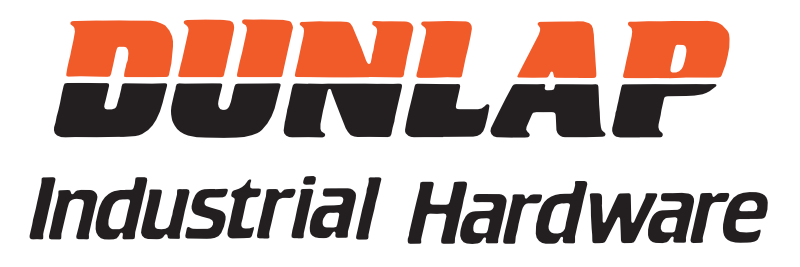Common Types of Chain
Grade 30 Proof Coil Chain – Made from low grade carbon steel, Grade 30 is an economical utility chain for applications not requiring a high strength to weight ratio. Its wide range of uses includes logging, guard rails, tailgate, and towing. NOT FOR OVERHEAD LIFTING.
Grade 43 High Test Chain – A high quality of carbon steel provides increased strength to weight ratio and excellent resistance to wear and abrasion. Industrial applications inlcude lumbering, construction, binding and tie-down assemblies. NOT FOR OVERHEAD LIFTING.
Grade 70 Binding Chain – The breaking strength of Grade 70 is 20% higher than that of Grade 43 in equal chain size, but has the same weight. Ideal for the transportation industry, where lighter weight chain is desired for ease of handling. NOT FOR OVERHEAD LIFTING.
Grade 100 Alloy Chain – Alloy chain is made from specially selected alloy steel. Engineered to provide the highest strength to weight ratio. Assures maximum durability and minimum elongation. Alloy chain is the only chain designed for overhead lifting.
Chain Slings
Grade 100 alloy chain slings and attachments are manufactured from special analysis alloy steel, engineered for a superior combination of strength, lightness, and durability.
All Grade 100 alloy chain and attachments are marked for easy, permanent identification and ISO 9000 traceability.
Chain slings are used primarily for overhead lifting, and are generally used in conjunction with a crane or some type of lifting device. Standard sling configurations consist of chain branches which are affixed on one end to a master link or ring with some type of attachment, usually a hook, affixed to the opposite end.

Chain Safety
Chain requires careful storage and regular maintenance.
WARNING! Do not exceed working load limit. Use only alloy chain and attachments for overhead lifting.
Some General Guidelines for Safe Chain Use
- Store chains on an A frame in a clean, dry place.
- To avoid corrosion, oil chains before prolonged storage.
- Do not heat Grade 100 alloy chain; this will alter its thermal treatment.
- Do not plate or change surface finish of chain.
- Store chains on an A frame in a clean, dry place.
- To avoid corrosion, oil chains before prolonged storage.
- Do not heat Grade 100 alloy chain; this will alter its thermal treatment.
- Do not plate or change surface finish of chain.
- Before use, inspect chain and attachments following instructions under the “Inspection” section that follows.
- Do not exceed working load limit. Any of the factors listed here can reduce the load the chain will hold:
- Acceleration in rate of load application-can produce dangerous overloading.
- Variation in the angle of the load to the sling-as the angle decreases, the working load of the sling will increase.
- Twisting, knotting, or kinking-subjects links to unusual loading, decreasing the working load of the sling.
- Use for purposes other than those for which slings are intended-can reduce the working load of the sling.
- Free chain of all twists, knots, and kinks
- Center load in hook(s); hook latches must not support load.
- Avoid sudden jerks when lifting and lowering.
- Balance all loads; avoid tipping of loads.
- Use pads around sharp corners.
- Match the size and working load limit of attachments such as hooks or rings to the size and working load limit of the chain.
- For overhead lifting, use only alloy chain and attachments (grade 100).
INSPECTION:
- It is important both to inspect chain slings regularly and to keep a record of all chain inspections. Follow this guide for such an inspection system.
- Before inspecting, clean chains with a non-acid/non-caustic solvent so that marks, nicks, wear, and other defects are visible.
- Inspect each link for these conditions:
- Twists or bends
- Nicks or gouges
- Excessive wear at bearing points
- Stretch
- Distorted or damaged master links, coupling links, or attachments, especially spread in throat opening of hooks
- Mark plainly with paint each link or attachment showing any of the conditions listed here to indicate rejection; remove from service until properly repaired.

